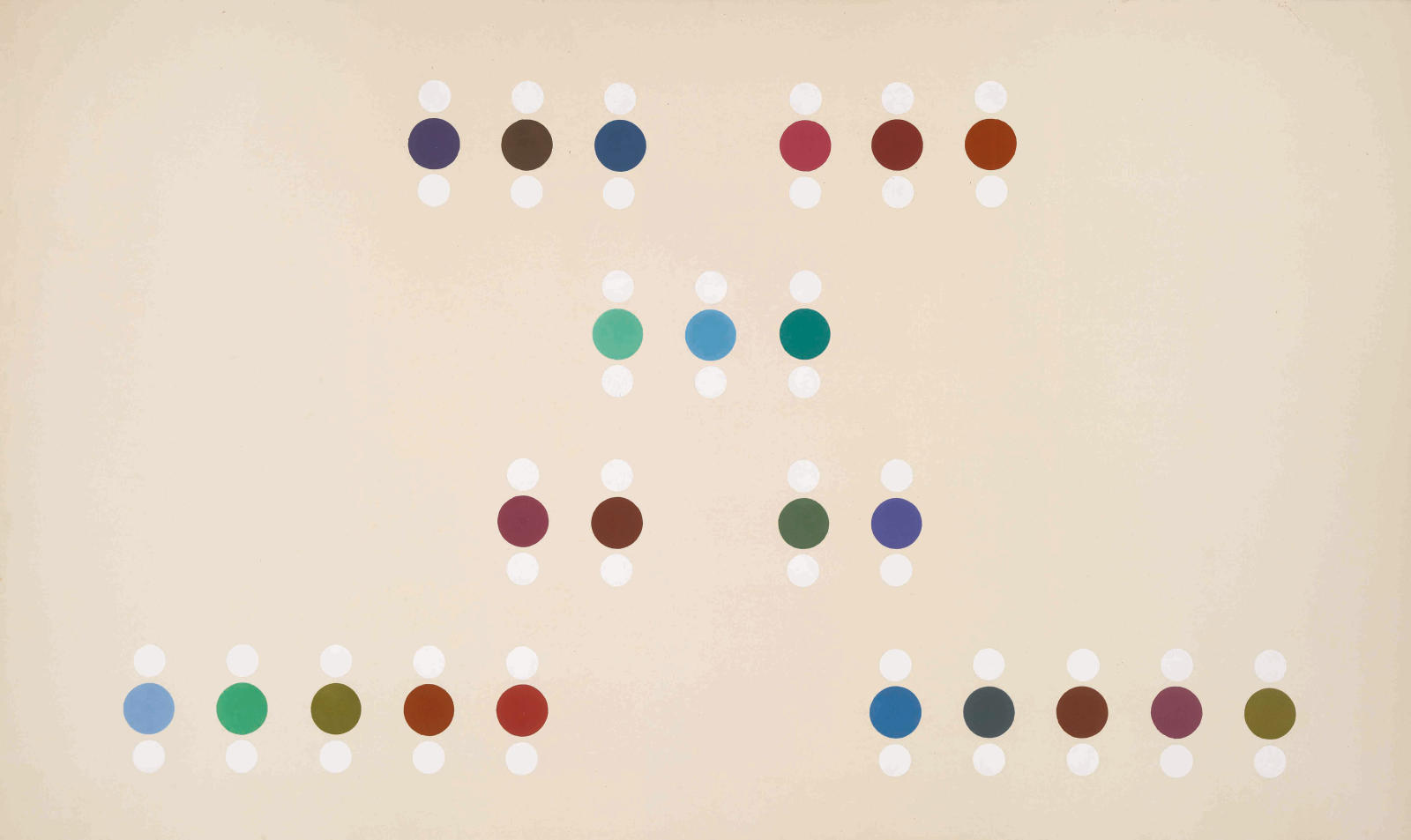





artist
Thomas Downing was a member of the Washington Color School co-founded by Morris Louis and Kenneth Noland. Downing is best known for his paintings of multiple colored disks systematically arranged into rectangles or squares. It has been suggested that such rigid and minimalist grids of large colored dots were created to protest the painterly "action" paintings of the Abstract Expressionists. These works by Dowling carefully avoided any evidence of the actual act of painting or brushstrokes. They are pure, clean, and almost mathematically measured. There is a freshness and yet also a formality here even as Downing experimented with different sizes and shapes as well as with different contrasting colors to elicit an optical illusion. Downing's occupation with color and their particular choices implies a knowledge of works by Josef Albers as well as the influence of Kenneth Noland and Morris Louis. It is interesting to compare these works by Downing with the "spot paintings" of the contemporary artist Damien Hirst. This period of hard-edged abstraction is just now beginning to soar in interest amongst collectors.
Thomas Downing worked in Washington, D.C. during the Color Field Movement of the 1960s. Raised in Virginia, he studied at Pratt Institute in Brooklyn, New York and the Académie Julian in Paris before settling in Washington in 1953. He attended Catholic University where he studied with Kenneth Noland, who became a close friend. Later in the decade, he shared a studio with Howard Mehring, who also became a part of the group of Color Field painters.
In 1964 the iconic art critic Clement Greenberg included works by Thomas Downing, Howard Mehring, Kenneth Noland, Frank Stella, and Helen Frankenthaler, among others, in his influential show at the Los Angeles County Museum of Art entitled "Post Painterly Abstraction." The title of this show became a byword for the movement itself, a term that drew a distinction between Color Field painting and gestural abstraction. From 1965 until 1968 Downing taught at the Corcoran School of Art in Washington, D.C. During his time in the city Downing exhibited regularly. Downing died in Provincetown, Massachusetts in 1985. His work can be found in numerous public collections. There will be an exhibition of Thomas Downing's works in 2015 at American University in Washington, D.C.





